 Technology peripherals
Technology peripherals
 AI
AI
 Using Transformer as a general-purpose computer, it can also execute in-context learning algorithms. This research is very imaginative.
Using Transformer as a general-purpose computer, it can also execute in-context learning algorithms. This research is very imaginative.
Using Transformer as a general-purpose computer, it can also execute in-context learning algorithms. This research is very imaginative.
Transformer has become a popular choice for various machine learning tasks and has achieved good results, so how else can it be used? Researchers with great imagination actually want to use it to design programmable computers!
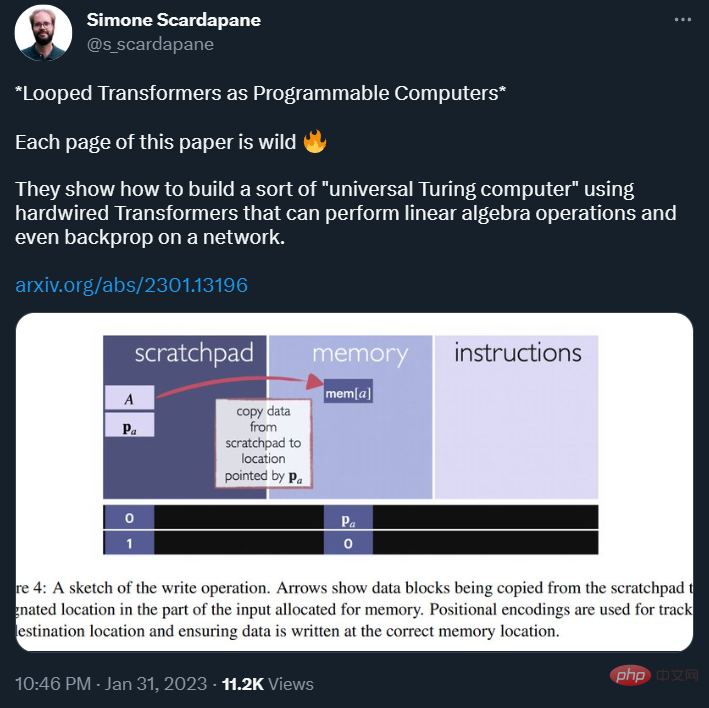
##The authors of this paper are from Princeton University and the University of Wisconsin. The title is "Looped Transformers as Programmable Computers" and its purpose is I'm exploring how to use Transformer to implement a general-purpose computer.
Specifically, the authors propose a framework for using transformer networks as general-purpose computers by programming them with specific weights and placing them in loops. In this framework, the input sequence acts as a punch card, consisting of instructions and memory for data reading/writing.
The authors demonstrate that a constant number of encoder layers can simulate basic computational blocks. Using these building blocks, they simulated a small instruction set computer. This allowed them to map the iterative algorithm to a program that could be executed by a looped 13-layer transformer. They show how this transformer can simulate a basic calculator, a basic linear algebra library, and an in-context learning algorithm using backpropagation, guided by its inputs. This work highlights the versatility of attention mechanisms and demonstrates that even shallow transformers can perform full-blown general-purpose programs.
Paper OverviewTransformer (TF) has become a popular choice for various machine learning tasks, and it has achieved results on many problems in fields such as natural language processing and computer vision. state-of-the-art results. A key reason for Transformer's success is its ability to capture higher-order relationships and long-range dependencies through attention mechanisms. This allows TF to model contextual information and makes it more effective in tasks such as machine translation and language modeling, where Transformer consistently outperforms other methods.
Language models with hundreds of billions of parameters, such as GPT-3 (175B parameters) and PaLM (540B parameters), have achieved state-of-the-art performance on many natural language processing tasks. Interestingly, some of these large language models (LLMs) can also perform in-context learning (ICL), adapting and performing specific tasks on the fly based on a short prompt and some examples. The ICL capabilities of LLMs are available without having to train them, and allow these large models to efficiently perform new tasks without updating weights.
Surprisingly, through ICL, LLM can perform algorithmic tasks and inference, and [Nye et al. [2021], Wei et al. [2022c], Lewkowycz et al [2022], Wei et al. [2022b], Zhou et al. [2022]] and others have proven its feasibility. Work by [Zhou et al. [2022] ] and others demonstrates that LLM can successfully perform addition operations on unknown use cases when given a prompt with a multi-bit addition algorithm and some addition examples. These results show that LLM can perform pre-instructed commands on given inputs at inference time, based on algorithmic principles, as if interpreting natural language as code.
There is evidence that Transformer can simulate recursive links between Turing machines or Attention layers with sufficient depth [Pérez et al. [2021], Pérez et al. [2019], Wei et al. [2022a]]. This demonstrates the potential of Transformer networks to precisely follow the algorithmic instructions specified by the input. However, these constructs are relatively general and do not provide a deep understanding of how to create a Transformer capable of performing specific algorithmic tasks.
However, a more professional design allows TF to perform more advanced programs. For example, [Weiss et al. [2021]] designed a computational model and a programming language that map simple selection and aggregation commands to index input tokens. This language can be used to create a variety of interesting algorithms, such as token counting, sorting, creating histograms, and identifying Dyck-k languages. Programs written in Restricted Access Sequence Processing Language (RASP) can then be mapped into Transformer networks, whose size typically scales with the size of the program.
Another study demonstrated a method for selecting Transformer model weights for use as an optimization algorithm for dynamically learning linear regression models, performing implicit operations at inference time given training data as input. style training. These methods typically require a number of layers proportional to the number of iterations of the learning algorithm and are limited to a single loss function and ensemble of models.
The ability to program Transformer models to simulate the abstract computation of Turing machines, specialized commands for languages like RASP, and specific algorithms for ICL highlights the potential of Transformer networks as versatile programmable computers.
The author's research aims to explore this promising prospect and reveal how attention mechanisms can simulate general-purpose computers inspired by instruction set architectures.
Transformers as Programmable Computers
In this article, the authors show that Transformer networks can be made by hard-coding them with specific weights and placing them in a loop to simulate complex algorithms and programs. The authors did this by reverse-engineering Attention to simulate basic computational blocks, such as editing operations on input sequences, nonlinear functions, function calls, program counters, and conditional branches. The authors' paper demonstrates the importance of using a single loop or recursion to concatenate a Transformer's output sequence back to its input, thereby avoiding the need for a deep model.
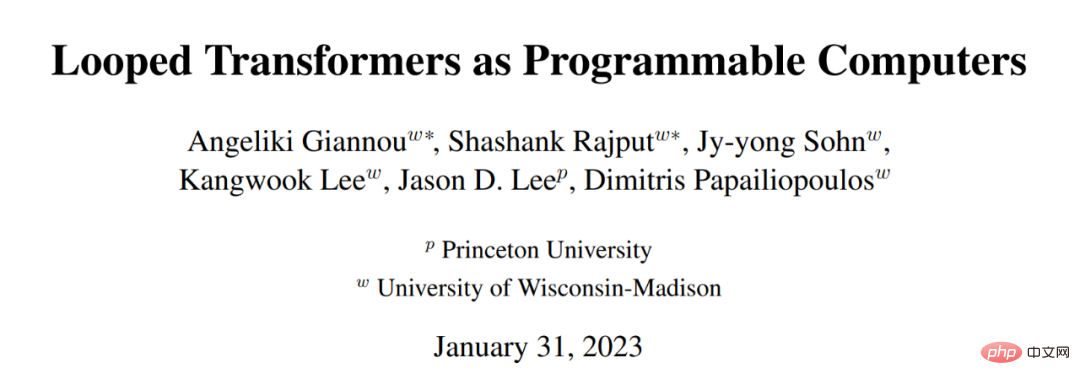
##Paper address: https://arxiv.org/pdf/2301.13196.pdf
The author achieves this by designing a Transformer that can execute a program written in a general version of a single instruction, called SUBLEQ (A,B,C), that is, if less than or equal to zero, subtract and combine branch. SUBLEQ is a single-instruction language that defines a one-instruction set computer (OISC). SUBLEQ consists of 3 memory address operands. During execution, the value of memory address B is subtracted from the value of memory address A, and the result is stored in B. If the result of B is less than or equal to 0, jump to address C, otherwise continue executing the next instruction. But this instruction defines a general-purpose computer.
The author constructs an explicit Transformer that implements a SUBLEQ-like program. The author calls it FLEQ, a more flexible single instruction in the form

where f_m can be selected from a set of functions (matrix multiplication/nonlinear function/polynomial, etc.), which can be hard-coded into the network. The depth of a looping Transformer that can execute a FLEQ program does not depend on the depth of the program or the number of lines of code, but rather on the depth required to implement a single FLEQ instruction, which is constant. This is achieved by running the Transformer in a loop over the input sequence, similar to how a CPU operates.
The author uses this framework to demonstrate the ability to simulate various functions during reasoning, including a basic calculator, a basic linear algebra library (matrix transpose, multiplication, solution Inverse, power iteration) and ICL implementing backpropagation on implicitly fully connected networks. The input sequence or prompt acts like a punch card, containing the instructions that the Transformer needs to execute, while providing space for storing and handling variables used in the program. The Transformer networks used to perform these procedures all have a depth less than or equal to 13, and the weight matrices for all these models are provided. The following theorem summarizes the author's main findings:
Theorem 1: There exists a cyclic Transformer with less than 13 layers, which can simulate a general-purpose computer (Section 5 of the article), a basic calculator (Section 7 of the article), numerical linear algebra methods such as approximate matrix inversion and power iteration (Section 8 of the article), and ICL algorithms based on neural networks (such as SGD) (Section 9 of the article).
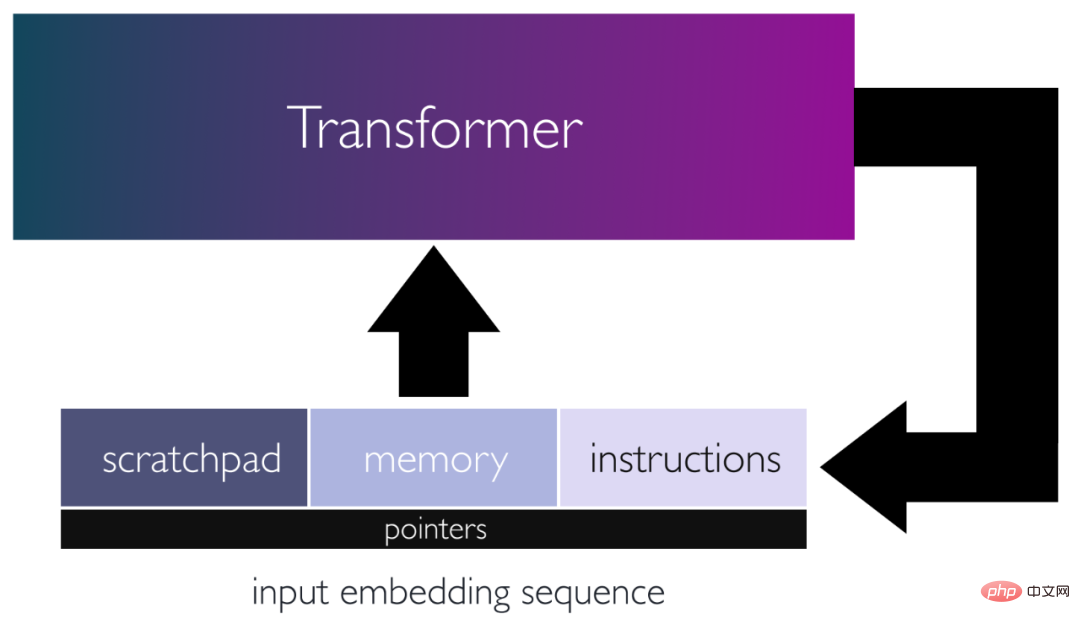
Figure 1: Schematic diagram of the loop Transformer architecture, in which the sequence storage command is input and read from / Memory for writing data and scratchpad for storing intermediate results. Inputs are processed by the network and outputs are used as new inputs, allowing the network to iteratively update implicit states and perform complex calculations.
The author's research emphasizes the flexibility of the Attention mechanism and the importance of a single loop, which makes it possible to design models that can simulate complex iterative algorithms and execute general programs. and further demonstrated the ability of the Transformer model to efficiently perform complex mathematical and algorithmic tasks. It is conceivable that modern Transformers, such as GPT-3, use similar internal subroutines when performing various tasks. To some extent, the capabilities of these model-specific techniques or algorithms can be enlightened when given contextual examples and explanations, similar to function calls. However, this assumption should be treated with caution, as the way the authors designed the structure bears no resemblance to how real-world language models are trained.
The authors hope that their study will encourage further research into the potential of attention mechanisms and the ability of language models to execute algorithmic instructions. The design proposed by the authors can help determine the minimum Transformer network size required to perform a specific algorithmic task. Additionally, the authors hope that their findings will help inspire the development of methods to enhance the ability to train language models by leveraging smaller, reverse-engineered Transformer networks to accomplish specific algorithmic tasks.
Building a Transformer module for general computing
To use the Transformer network to build a general computing framework, a specialized computing block is required. Assemble these blocks to create the desired final functionality. The following focuses on the various operations that the Transformer layer can perform. These operations will provide the basis for creating more complex routines and algorithms. These operations are designed to be interoperable with each other, leveraging Attention's ability to perform a variety of tasks, such as generating approximate permutation matrices and approximating general functions via sigmoid functions.

Figure 2: Three Transformer blocks used as building blocks for implementing a small instruction set computer schematic diagram. These blocks handle editing operations in the input sequence (such as moving or copying from one block to another), tracking the program counter, and performing program counter jumps when specified conditions are met.
Position encoding, program counter and data pointer
Transformer is usually required to perform iterative algorithms Or execute a series of commands. To achieve this, the author uses a program counter that loops through commands. The counter contains a code for the location where the next command is stored. Additionally, commands may have data pointers pointing to the data locations that the command needs to read and write. Both the program counter and the data pointer use the same positional encoding discussed in the previous paragraph.

The author's positional encoding scheme can also be used to point to specific data locations for reading or writing, which will be discussed below One section discusses. This is achieved by using the same binary vector as the position encoding for the program counter and data pointer. Additionally, this technique of pointing to specific data locations enables Transformers to efficiently read/write data during the execution of an algorithm or sequence of commands it was built to implement.
Read/write: copy data and instructions to or from the temporary register

# Figure 3: Schematic diagram of the read operation. The arrow shows the command block copied from the input portion assigned to the scratchpad command. An instruction is a set of pointers. Position codes and counters are used to track what content is copied where.
#The following lemma states that the command pointed to by the program counter or the data at the location specified in the current command can be copied to the scratchpad for further calculations. The location of the program counter is usually directly below the contents of the scratchpad, but can be changed arbitrarily. Keeping it in a specific position throughout the calculation helps keep the structure well organized.
The next lemma explains that a vector v stored in a scratchpad can be copied to a specified location in memory, as specified by the scratchpad itself. This allows data to be transferred from the scratchpad to a specific location in memory for further use or storage.
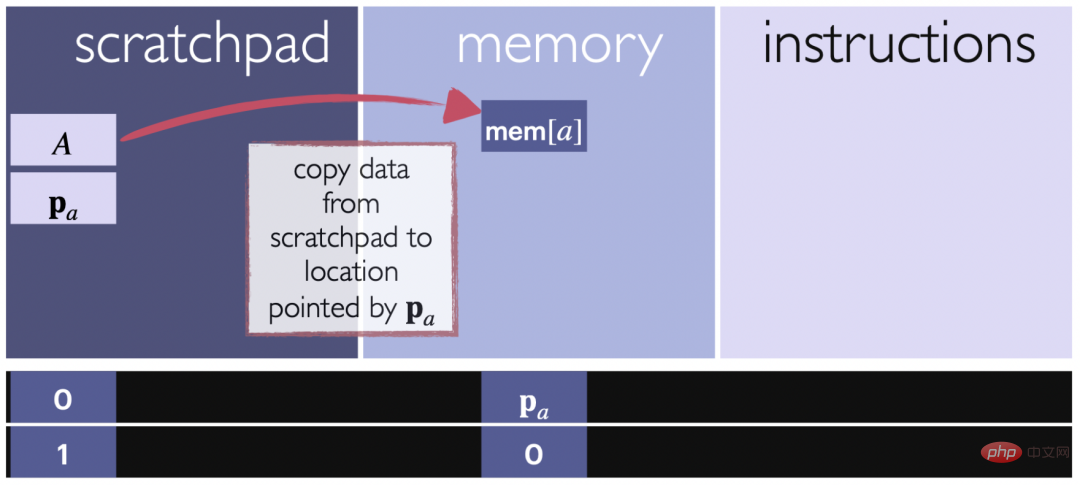
Figure 4: Schematic diagram of write operation. The arrow shows that the block of data is being copied from the scratchpad to the specified location in the input section allocated to memory. Positional encoding is used to track target locations and ensure data is written to the correct memory location.

##Conditional branch
In this part, the author implements a conditional branch instruction that evaluates a condition and sets the program counter to a specified location when the condition is true, or increments the program counter by 1 when the condition is false.
The form of the command is as follows: if mem[a]≤0, then go to i, where mem[a] is the value at a position in the memory part of the input sequence. This command has two parts: judging the inequality and modifying the program counter.
Simulating a Universal Single Instruction Set ComputerSUBLEQ Transformer
Mavaddat and Parhami back in 1988 It has been demonstrated in 2001 that there is an instruction and that any computer program can be converted into a program consisting of instantiations of this instruction. A variation of this instruction is SUBLEQ, which can access different registers or memory locations.
The way SUBLEQ works is simple. It accesses two registers in memory, gets the difference of their contents and stores it back to one of the registers, then if the result is negative it jumps to a different predefined line of code or continues with the next instruction of the current line . A computer built to execute SUBLEQ programs is called a single instruction set computer and is a general purpose computer, i.e. it is Turing complete if it has access to infinite memory.

The following describes the construction of a looping Transformer that can execute programs written with a specific instruction set. Transformer keeps track of lines of code, memory locations, and program counters, using the memory portion of the input as memory registers and the command portion as lines of code/instructions. The temporary register is used to record additions and pointers involved in each instruction, reading, writing, conditional branch operations, etc.

Figure 5: Graphical representation of the implementation of the OISC instruction block. The first two blocks transfer the data/commands to the scratchpad, the second and third perform the subtraction and store the result, and the last one performs the if goto command that completes the instruction.
FLEQ: A more flexible Attention-based computer
In this section, the author introduces FLEQ To introduce, it is a generalization of SUBLEQ, which defines a more flexible reduced instruction set computer. This implicit additional instruction set is based on a more advanced version of SUBLEQ and allows multiple functions to be implemented in the same Transformer network. The authors use the term FLEQ to refer to the instructions, language, and attention-based computers it defines.
FLEQ is designed to allow the implementation of complex algorithms such as matrix multiplication, square root calculations, activation functions, etc. by generating functions that are more general than simple subtraction.
Attention-based computer execution cycle. On each iteration of the loop Transformer, an instruction is fetched from the instruction set in the input based on the program counter. The instruction is then copied to the scratchpad. Depending on the function to be implemented, different function block locations are used to locally record the results of the function. Once the result is calculated, it is copied back to the specified memory location provided by the instruction.
The execution cycle is similar to that of a Single Instruction Set Computer (OISC) from the previous section, the main difference being that for each instruction, one can choose from a list of pre-selected functions. Functions take input as arbitrary arrays, such as matrices, vectors, and scalars.
The format of the input sequence. As shown in Figure 6, the input X of the loop Transformer can execute a program composed of a series of FLEQ instructions (X consists of three parts: temporary register, memory, and instructions).
Format of Transformer-based function block. Each function block is located in the lower left portion of input X, as shown in Figure 6.
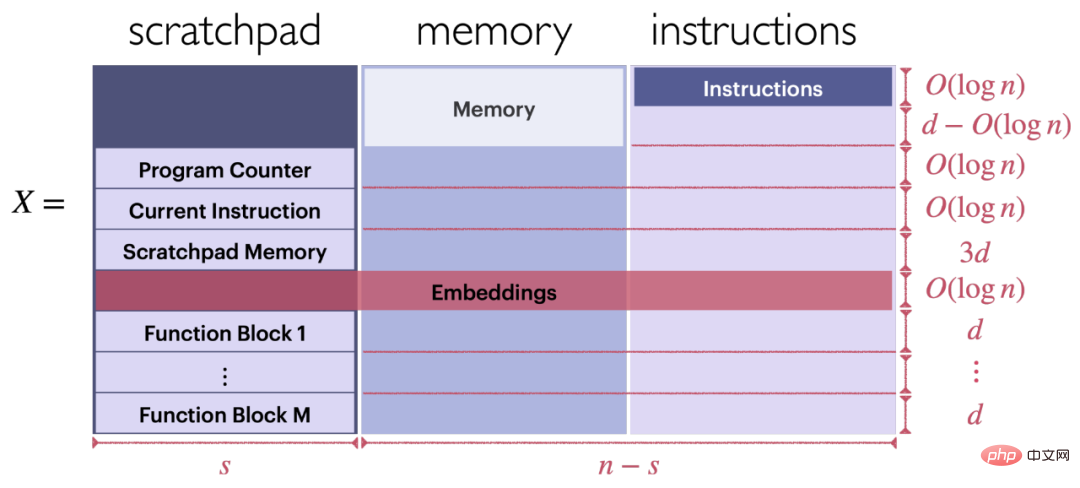
Figure 6: Structure of input X for executing FLEQ command
Please refer to the original paper for more technical details and examples.
The above is the detailed content of Using Transformer as a general-purpose computer, it can also execute in-context learning algorithms. This research is very imaginative.. For more information, please follow other related articles on the PHP Chinese website!

Hot AI Tools

Undresser.AI Undress
AI-powered app for creating realistic nude photos

AI Clothes Remover
Online AI tool for removing clothes from photos.

Undress AI Tool
Undress images for free

Clothoff.io
AI clothes remover

AI Hentai Generator
Generate AI Hentai for free.

Hot Article

Hot Tools

Notepad++7.3.1
Easy-to-use and free code editor

SublimeText3 Chinese version
Chinese version, very easy to use

Zend Studio 13.0.1
Powerful PHP integrated development environment

Dreamweaver CS6
Visual web development tools

SublimeText3 Mac version
God-level code editing software (SublimeText3)

Hot Topics
 1376
1376
 52
52
 The Stable Diffusion 3 paper is finally released, and the architectural details are revealed. Will it help to reproduce Sora?
Mar 06, 2024 pm 05:34 PM
The Stable Diffusion 3 paper is finally released, and the architectural details are revealed. Will it help to reproduce Sora?
Mar 06, 2024 pm 05:34 PM
StableDiffusion3’s paper is finally here! This model was released two weeks ago and uses the same DiT (DiffusionTransformer) architecture as Sora. It caused quite a stir once it was released. Compared with the previous version, the quality of the images generated by StableDiffusion3 has been significantly improved. It now supports multi-theme prompts, and the text writing effect has also been improved, and garbled characters no longer appear. StabilityAI pointed out that StableDiffusion3 is a series of models with parameter sizes ranging from 800M to 8B. This parameter range means that the model can be run directly on many portable devices, significantly reducing the use of AI
 Have you really mastered coordinate system conversion? Multi-sensor issues that are inseparable from autonomous driving
Oct 12, 2023 am 11:21 AM
Have you really mastered coordinate system conversion? Multi-sensor issues that are inseparable from autonomous driving
Oct 12, 2023 am 11:21 AM
The first pilot and key article mainly introduces several commonly used coordinate systems in autonomous driving technology, and how to complete the correlation and conversion between them, and finally build a unified environment model. The focus here is to understand the conversion from vehicle to camera rigid body (external parameters), camera to image conversion (internal parameters), and image to pixel unit conversion. The conversion from 3D to 2D will have corresponding distortion, translation, etc. Key points: The vehicle coordinate system and the camera body coordinate system need to be rewritten: the plane coordinate system and the pixel coordinate system. Difficulty: image distortion must be considered. Both de-distortion and distortion addition are compensated on the image plane. 2. Introduction There are four vision systems in total. Coordinate system: pixel plane coordinate system (u, v), image coordinate system (x, y), camera coordinate system () and world coordinate system (). There is a relationship between each coordinate system,
 This article is enough for you to read about autonomous driving and trajectory prediction!
Feb 28, 2024 pm 07:20 PM
This article is enough for you to read about autonomous driving and trajectory prediction!
Feb 28, 2024 pm 07:20 PM
Trajectory prediction plays an important role in autonomous driving. Autonomous driving trajectory prediction refers to predicting the future driving trajectory of the vehicle by analyzing various data during the vehicle's driving process. As the core module of autonomous driving, the quality of trajectory prediction is crucial to downstream planning control. The trajectory prediction task has a rich technology stack and requires familiarity with autonomous driving dynamic/static perception, high-precision maps, lane lines, neural network architecture (CNN&GNN&Transformer) skills, etc. It is very difficult to get started! Many fans hope to get started with trajectory prediction as soon as possible and avoid pitfalls. Today I will take stock of some common problems and introductory learning methods for trajectory prediction! Introductory related knowledge 1. Are the preview papers in order? A: Look at the survey first, p
 DualBEV: significantly surpassing BEVFormer and BEVDet4D, open the book!
Mar 21, 2024 pm 05:21 PM
DualBEV: significantly surpassing BEVFormer and BEVDet4D, open the book!
Mar 21, 2024 pm 05:21 PM
This paper explores the problem of accurately detecting objects from different viewing angles (such as perspective and bird's-eye view) in autonomous driving, especially how to effectively transform features from perspective (PV) to bird's-eye view (BEV) space. Transformation is implemented via the Visual Transformation (VT) module. Existing methods are broadly divided into two strategies: 2D to 3D and 3D to 2D conversion. 2D-to-3D methods improve dense 2D features by predicting depth probabilities, but the inherent uncertainty of depth predictions, especially in distant regions, may introduce inaccuracies. While 3D to 2D methods usually use 3D queries to sample 2D features and learn the attention weights of the correspondence between 3D and 2D features through a Transformer, which increases the computational and deployment time.
 The first multi-view autonomous driving scene video generation world model | DrivingDiffusion: New ideas for BEV data and simulation
Oct 23, 2023 am 11:13 AM
The first multi-view autonomous driving scene video generation world model | DrivingDiffusion: New ideas for BEV data and simulation
Oct 23, 2023 am 11:13 AM
Some of the author’s personal thoughts In the field of autonomous driving, with the development of BEV-based sub-tasks/end-to-end solutions, high-quality multi-view training data and corresponding simulation scene construction have become increasingly important. In response to the pain points of current tasks, "high quality" can be decoupled into three aspects: long-tail scenarios in different dimensions: such as close-range vehicles in obstacle data and precise heading angles during car cutting, as well as lane line data. Scenes such as curves with different curvatures or ramps/mergings/mergings that are difficult to capture. These often rely on large amounts of data collection and complex data mining strategies, which are costly. 3D true value - highly consistent image: Current BEV data acquisition is often affected by errors in sensor installation/calibration, high-precision maps and the reconstruction algorithm itself. this led me to
 GSLAM | A general SLAM architecture and benchmark
Oct 20, 2023 am 11:37 AM
GSLAM | A general SLAM architecture and benchmark
Oct 20, 2023 am 11:37 AM
Suddenly discovered a 19-year-old paper GSLAM: A General SLAM Framework and Benchmark open source code: https://github.com/zdzhaoyong/GSLAM Go directly to the full text and feel the quality of this work ~ 1 Abstract SLAM technology has achieved many successes recently and attracted many attracted the attention of high-tech companies. However, how to effectively perform benchmarks on speed, robustness, and portability with interfaces to existing or emerging algorithms remains a problem. In this paper, a new SLAM platform called GSLAM is proposed, which not only provides evaluation capabilities but also provides researchers with a useful way to quickly develop their own SLAM systems.
 'Minecraft' turns into an AI town, and NPC residents role-play like real people
Jan 02, 2024 pm 06:25 PM
'Minecraft' turns into an AI town, and NPC residents role-play like real people
Jan 02, 2024 pm 06:25 PM
Please note that this square man is frowning, thinking about the identities of the "uninvited guests" in front of him. It turned out that she was in a dangerous situation, and once she realized this, she quickly began a mental search to find a strategy to solve the problem. Ultimately, she decided to flee the scene and then seek help as quickly as possible and take immediate action. At the same time, the person on the opposite side was thinking the same thing as her... There was such a scene in "Minecraft" where all the characters were controlled by artificial intelligence. Each of them has a unique identity setting. For example, the girl mentioned before is a 17-year-old but smart and brave courier. They have the ability to remember and think, and live like humans in this small town set in Minecraft. What drives them is a brand new,
 Review! Deep model fusion (LLM/basic model/federated learning/fine-tuning, etc.)
Apr 18, 2024 pm 09:43 PM
Review! Deep model fusion (LLM/basic model/federated learning/fine-tuning, etc.)
Apr 18, 2024 pm 09:43 PM
In September 23, the paper "DeepModelFusion:ASurvey" was published by the National University of Defense Technology, JD.com and Beijing Institute of Technology. Deep model fusion/merging is an emerging technology that combines the parameters or predictions of multiple deep learning models into a single model. It combines the capabilities of different models to compensate for the biases and errors of individual models for better performance. Deep model fusion on large-scale deep learning models (such as LLM and basic models) faces some challenges, including high computational cost, high-dimensional parameter space, interference between different heterogeneous models, etc. This article divides existing deep model fusion methods into four categories: (1) "Pattern connection", which connects solutions in the weight space through a loss-reducing path to obtain a better initial model fusion



